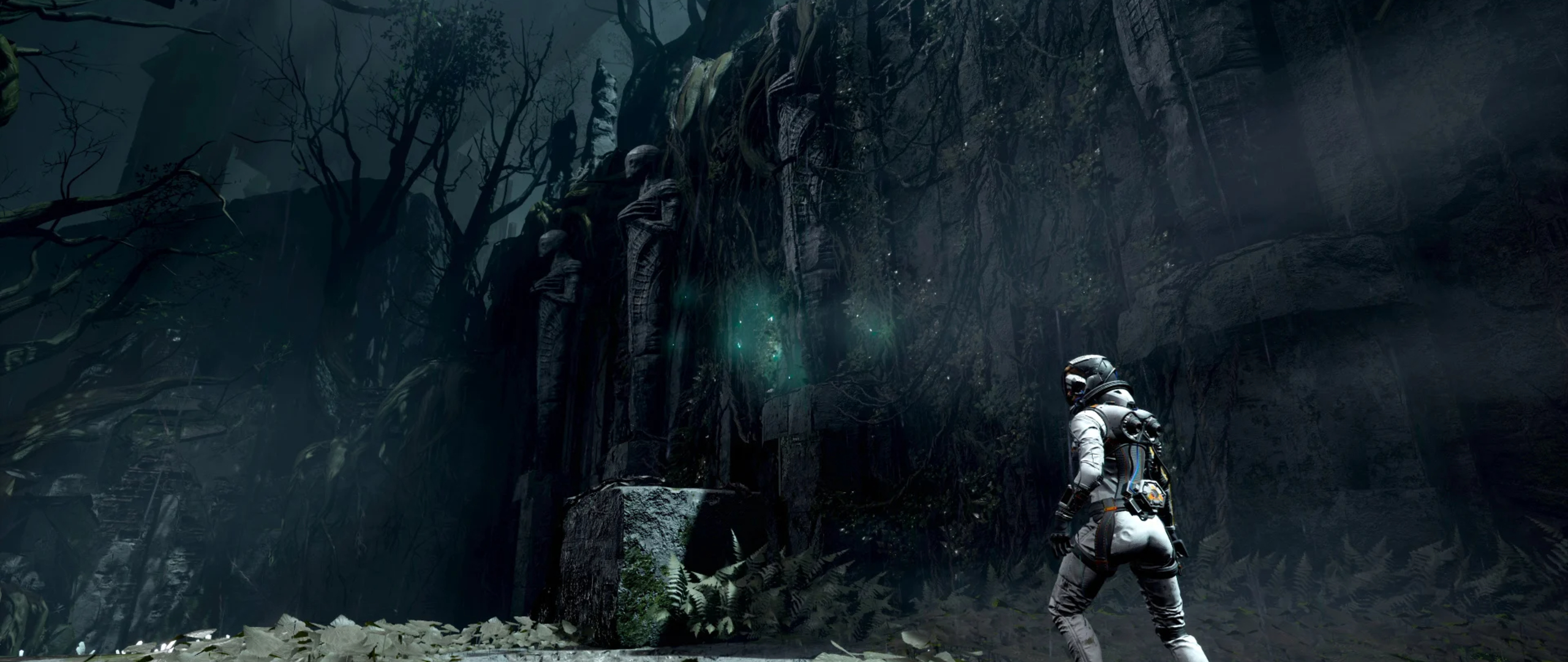Laptop Mag Verdict
Returnal boasts fantastic boss fights and brilliant storytelling, but its subpar rogue-like structure makes each run feel like a meaningless slog.
Pros
- +
Excellent bosses
- +
Immersive atmosphere
- +
Compelling narrative
- +
Satisfying gunplay
Cons
- -
Low replayability
- -
Subpar rogue-like elements
- -
Repetitive environments
- -
Terrible final act
Why you can trust Laptop Mag
Returnal is a sci-fi third-person shooter developed by Housemarque, the studio behind Resogun and Nex Machina. The game is interwoven with rogue-like mechanics, but after some analysis, it feels as if it’s masquerading as one only to pad playtime. It’s short on content, has minimal replayability and lacks environmental diversity. Strip away its rogue-like elements and there’s merely six hours worth of content here; even with those elements, it took only 12 hours to complete.
Thankfully, there’s still a lot to like in Returnal; every boss is visually and mechanically excellent, while the atmosphere and narrative are compelling. The gunplay is exciting and the game truly shines when you're locked in an arena against ruthless alien creatures.
Even so, it seems as if Housemarque bit off more than it could chew by trying to craft a AAA third-person shooter for the first time. The team has certainly made Returnal into a passable experience, but it's not worth the $69.99 sticker price.
The mysteries of the planet
Returnal’s narrative is simple on the surface: Selene, the protagonist, crashes on an alien planet (Atropos) that refuses to let her go. With every death, she reappears at the crash site as the environment around her shifts and turns. This world is cryptic and mysterious, but you're given plenty of clues to unravel the story. Every new bit of information I received while playing made me question Selene’s reality and the literal or symbolic meaning of events occurring around her.
If Returnal is analyzed in the same way someone might approach The Last of Us 2, players will have trouble piecing the story together. The language Selene uses to narrate events is poetic; without digging into audio logs and cyphers, it will sound like gibberish. The cutscenes themselves aren't meaty enough to sustain a fulfilling narrative.
Discourse regarding the game’s events and their meaning will be significant shortly after Returnal launches. When discussing with my brother, we debated about what certain cutscenes, lines of dialogue, audio logs and cyphers could imply. He and I have never argued so heavily about what a game’s greater meaning is; giving players a mystery that they must unravel on their own is one of the most compelling aspects of Returnal.
Engaging gunplay
Returnal’s thrilling gunplay ensures that every weapon is satisfying to fire and even more satisfying when used to demolish foes. No single firearm feels too similar to another, and although there aren’t many, they can be used in unique ways to overcome obstacles.
Sign up to receive The Snapshot, a free special dispatch from Laptop Mag, in your inbox.

For example, the Rotgland Lobber lets you shoot an enemy once and hide as a poison effect eats at their health. The Electropylon Driver can shoot spikes onto surfaces which create lines of red electricity that latch onto foes and deal damage over time (this is especially useful for the final area, which is full of weak but harmful enemies that can sneak up on the player). And the Dreadbound fires projectiles that return to refill the clip after they’ve hit a surface, so if you're closer to an enemy, it’ll fire quicker and absolutely devastate them.
However, I wish you could have more than one weapon equipped at a time. The Rotgland Lobber is so much stronger than the other firearms due to its ability to damage enemies without you needing to be present. Whenever I found one during a run, I pretty much avoided experimentation with any other gun. This made the gameplay loop a bit repetitive, especially since there’s no incentive to use other weapons.
High-octane battles
Returnal also features a slew of potentially dangerous enemies. If left unchecked, the battlefield will turn into a bullet-hell, forcing you to carefully, but quickly plan the best course of action to minimize damage taken; you're encouraged to dodge, jump and sprint through arenas as they shoot back.
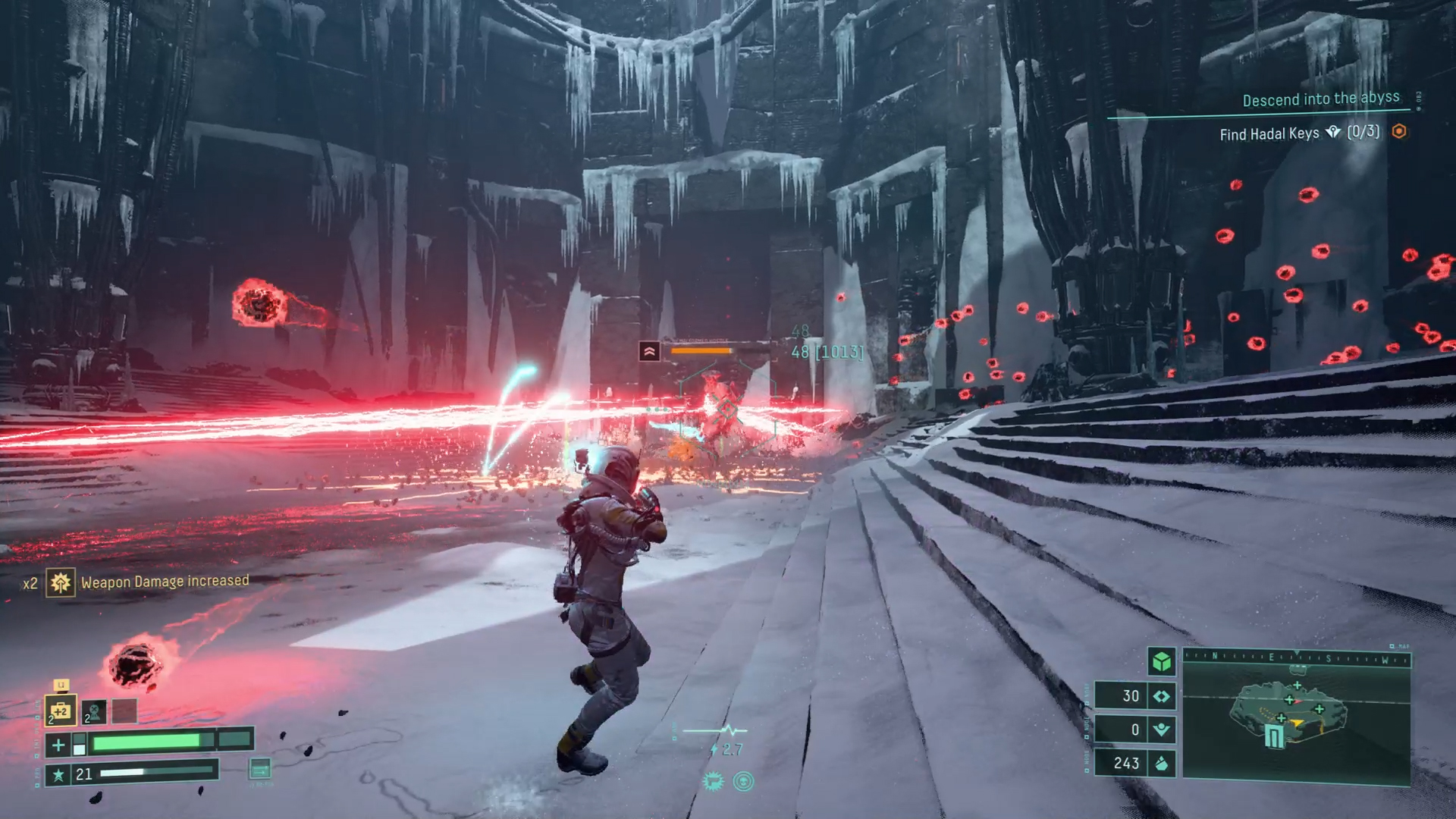
This is especially true for the game’s bosses, which are all coupled with brilliant imagery, exhilarating attacks, and visceral sound design; I can still hear IXION screeching as he flies throughout the Crimson Wastes, turning the natural red glow of the environment into a harsh, artificial blue before waves of plasma burst out of him.
I won’t spoil any specifics, but the final boss of act one is visually striking, with a terrifying set of attacks that had my heart pumping rigorously. Housemarque messes with the player’s expectations during this fight and utilizes unique gimmicks to make it memorable. Returnal’s greatest flaw is that it only features five bosses; each of them is excellent and I’m itching for more.
Returnal fails as a rogue-like
Returnal fails to evoke the excitement that surrounds a rogue-like. There are two ways the genre typically operates: All progression is lost after death, but each playthrough presents different challenges and ideas to create a one-of-a-kind experience. The player should have something substantial to look forward to every time they hit the restart button.
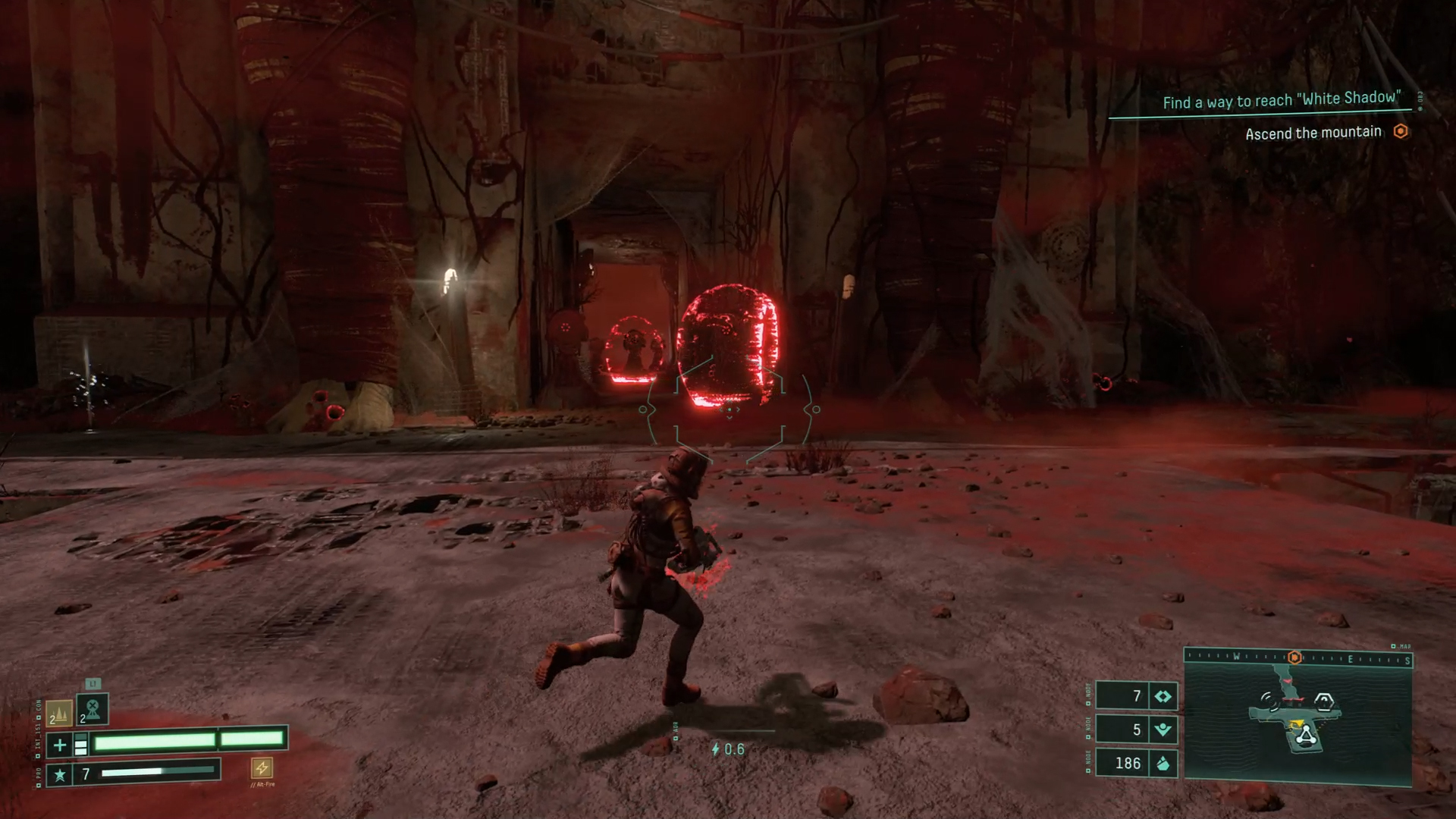
Alternatively, other games in the genre retain significant progression to sustain a sense of fulfilment between runs, but as a result, the experience is more linear. The goal is to enhance your abilities to the point where you have a greater opportunity to overcome challenges. This way, it feels like you're making some sort of progress, even when you fail.
Returnal doesn't take either of these approaches. Almost all progression is lost after death, but runs feel practically identical to one another. Room diversity is painfully low, enemies are reused consistently throughout the game, and many of the environments riff off of previous ones.
After completing Returnal, I returned to the Crimson Wastes on three additional runs to find a certain item. Throughout these runs (which took about three hours in total), I only discovered three new rooms and hadn’t even found the item I was looking for. It’s hard to be engaged when there’s a lack of diverse mechanics, enemies and bosses; there should be something to look forward to between runs. Dying in Returnal feels pointless, as it’s essentially the equivalent of replaying the game.
Here’s the weird part: Returnal gives the player tons of shortcuts that allows them to pick up right where they left off. If I die to a boss, it’s easy to get back to that same boss on the next run. This is antithetical to what a rogue-like is trying to accomplish. Minimizing character progression, but making the world more lenient is why Returnal takes only 12 hours to beat and offers few challenges.
Not very difficult
After 29 hours of playtime, I’ve accumulated a total of 12 deaths. Most of these deaths occurred early on as I was still getting a hang of the game, but after beating Returnal, I died only twice over the course of 17 hours of playtime.

Returnal suffers from a structure that is unforgiving in certain ways, but as a result, there’s no room for the battles themselves to be challenging. Fully exploring a single biome will take the player around an hour. If the player were to die on the third biome of the game, this could mean they’re losing anywhere from two to three hours of character progression.
Housemarque’s solution to this is to make battles less difficult. Dying to a difficult enemy after three hours of playtime and losing all of that progress would be devastating, so it was probably intentional to avoid such a high degree of challenge. Additionally, there are items that will revive the player after death. In fact, players can have more than one of these stacked at once, making it nearly impossible to lose.
Throughout my 29 hours of playtime in Returnal, I’ve only died to a boss once. I’ve played many rogue-likes throughout my life, and I can certainly say I haven’t had this much luck in any of them.
Immersive sensations
Returnal is mechanically flawed, but as far tactile sensations go, it’s wonderful. The use of the DualSense is brilliant; players will feel every step they take, every chest they unlock, and every shot they fire. There’s an incredible sensation of responsiveness that adds to the immersion when locked in combat.
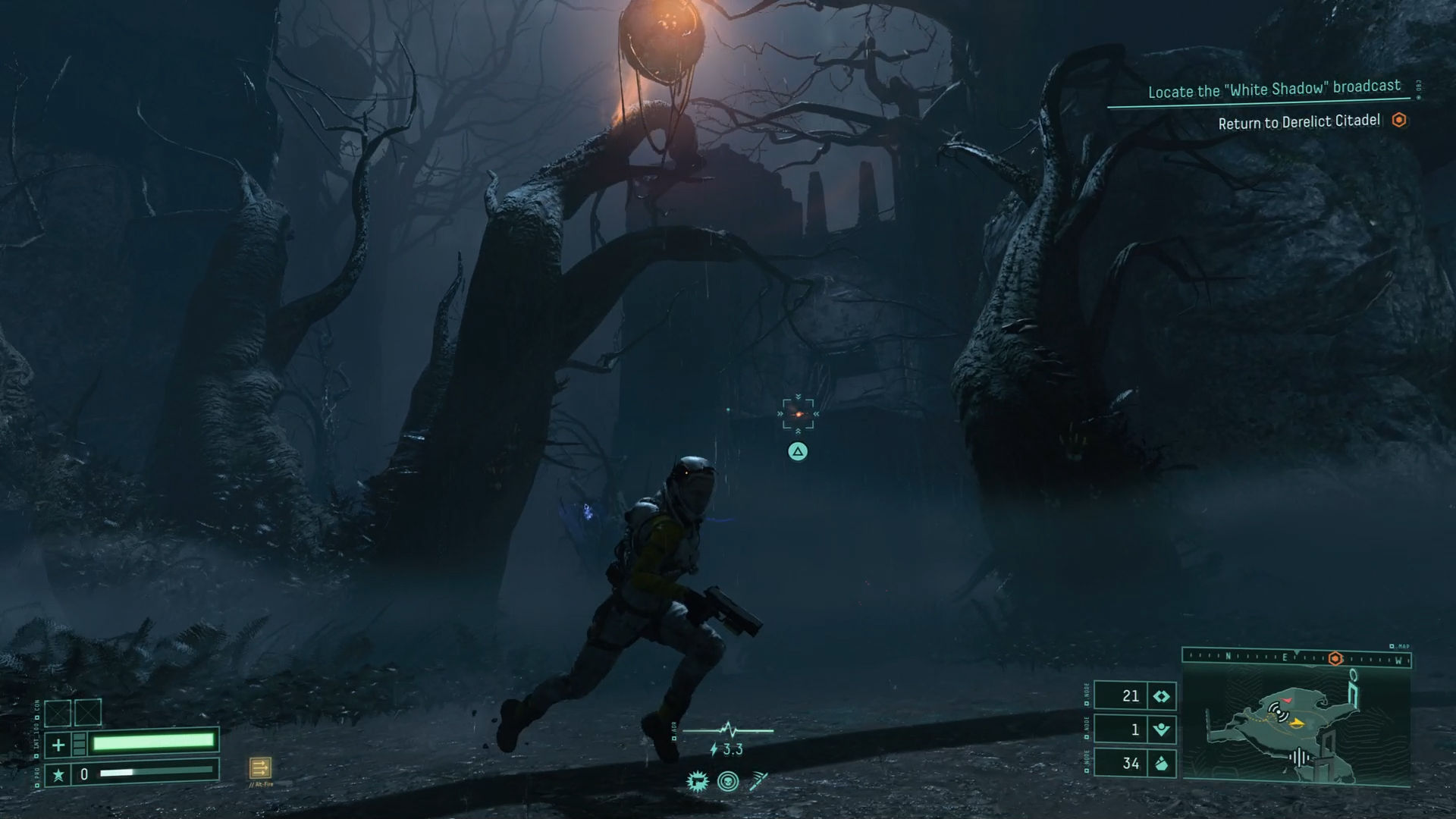
The sound design is also excellent, as the noises of Atropos are genuinely terrifying. Players will fear the goosebump-inducing screeches of alien life, and as they find themself in battle, the intense electronic soundtrack kicks in; these abrasive synths make each encounter feel truly threatening.
Returnal suffers from an overwhelming amount of visual effects which can distract from what’s important, but it looks awesome regardless. Many enemy attacks are coded in bold neon colors that mesh beautifully with the grim wasteland. Every boss (and some of the more difficult enemies) emits a chaotic collection of bullets on screen that induce sensory overload; it’s almost like watching a light show.
And when the player isn’t carefully navigating a bullet-hell, they can take in the hopeless sights of Atropos. The game possesses plenty of mysterious ideas that burned themselves into my mind, from the gigantic spheres of black sludge, the endless deserts of the Crimson Wastes, or the mysterious ocean life that inhabits the bottom of the world. Returnal reuses assets too often, but on their own, most areas are striking.
These elements contribute to Returnal’s immersive atmosphere. When the game is at its best, players will get lost in the sound, music, vibrations and imagery.
Low replayability
Returnal lacks certain mechanics that would make you want to return to the game over and over. There are plenty of locked artifacts, weapons, and consumable items, but unlocking them is a slog. You're reliant on luck as to whether an item spawns within the world during that run, meaning you have to grind through areas to have access to them in future playthroughs.
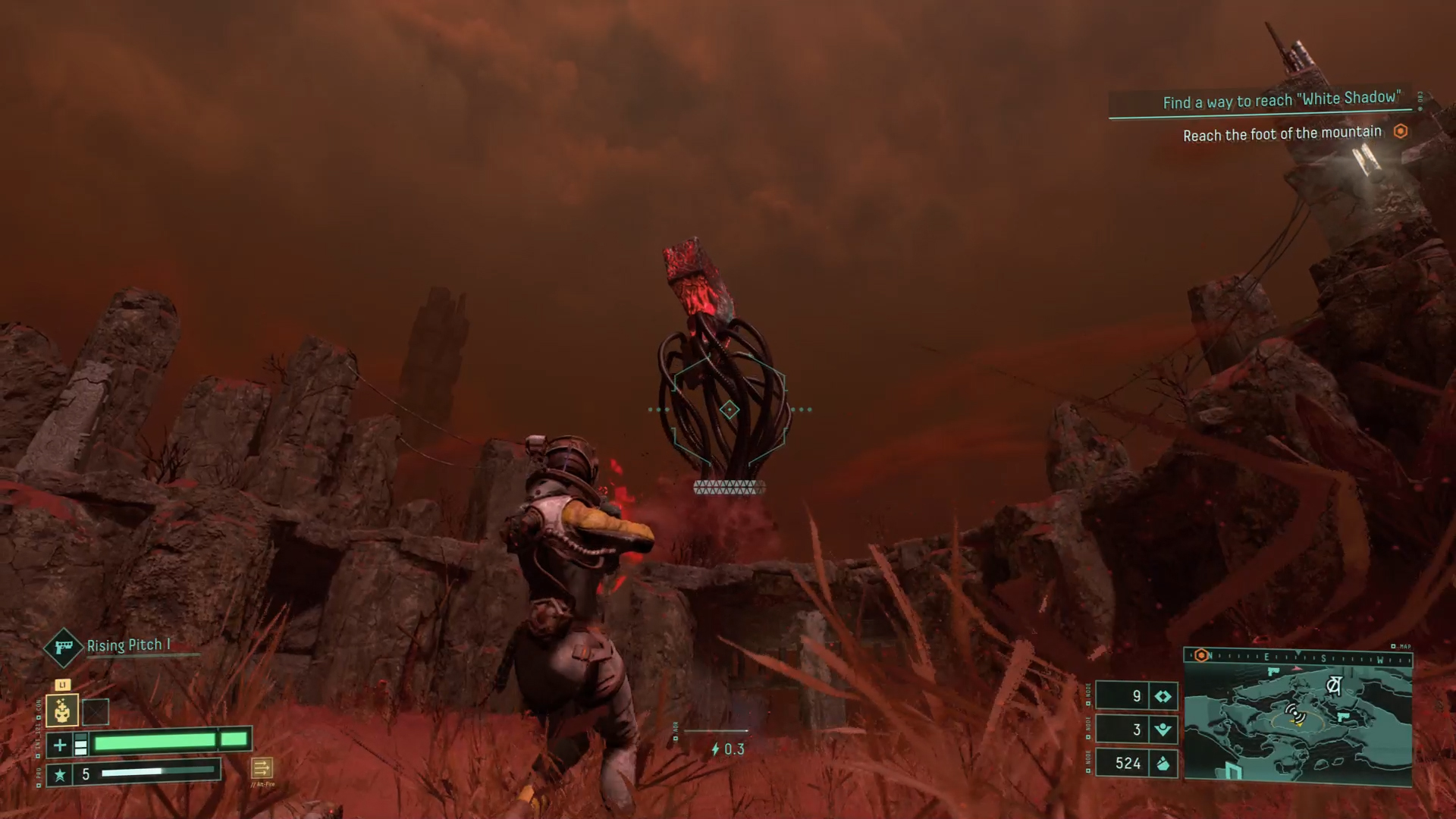
A game like Risk of Rain 2 lets you unlock new items, characters and abilities through challenges. One challenge includes defeating a boss in under 15 seconds, and doing so yields a specific item. This is a great way to encourage replayability. It provides an objective and adds a challenging goal to keep things fun even after you beat the game, whereas Returnal simply encourages retreading the same areas over and over until you get lucky.
It isn't as if the game is completely void of these types of challenges, as things got fun when trying to unlock certain trophies. One required having five parasites equipped at once, which was difficult because these creatures are as beneficial to the player as they are harmful. This forced me to avoid enemies when I killed them because they’d drop harmful pools of acid, and it discouraged me from picking up items because doing so would deal damage to Selene. More of these optional challenges (with proper rewards) to spice things up would make things more engaging.
There is also an interactive object at the start of each run that lets you exchange currency to unlock a new item. Unfortunately, doing so didn't feel rewarding because the reward was generated randomly, but at least there’s an element where you feel that you're contributing something.
Lacking content
Returnal is most engaging during the rare moments when a player discovers a new room, especially if it’s coupled with a cutscene. Secret bosses or optional challenges would have added to this engagement; it’s especially damning that the game only features five boss fights and six biomes.
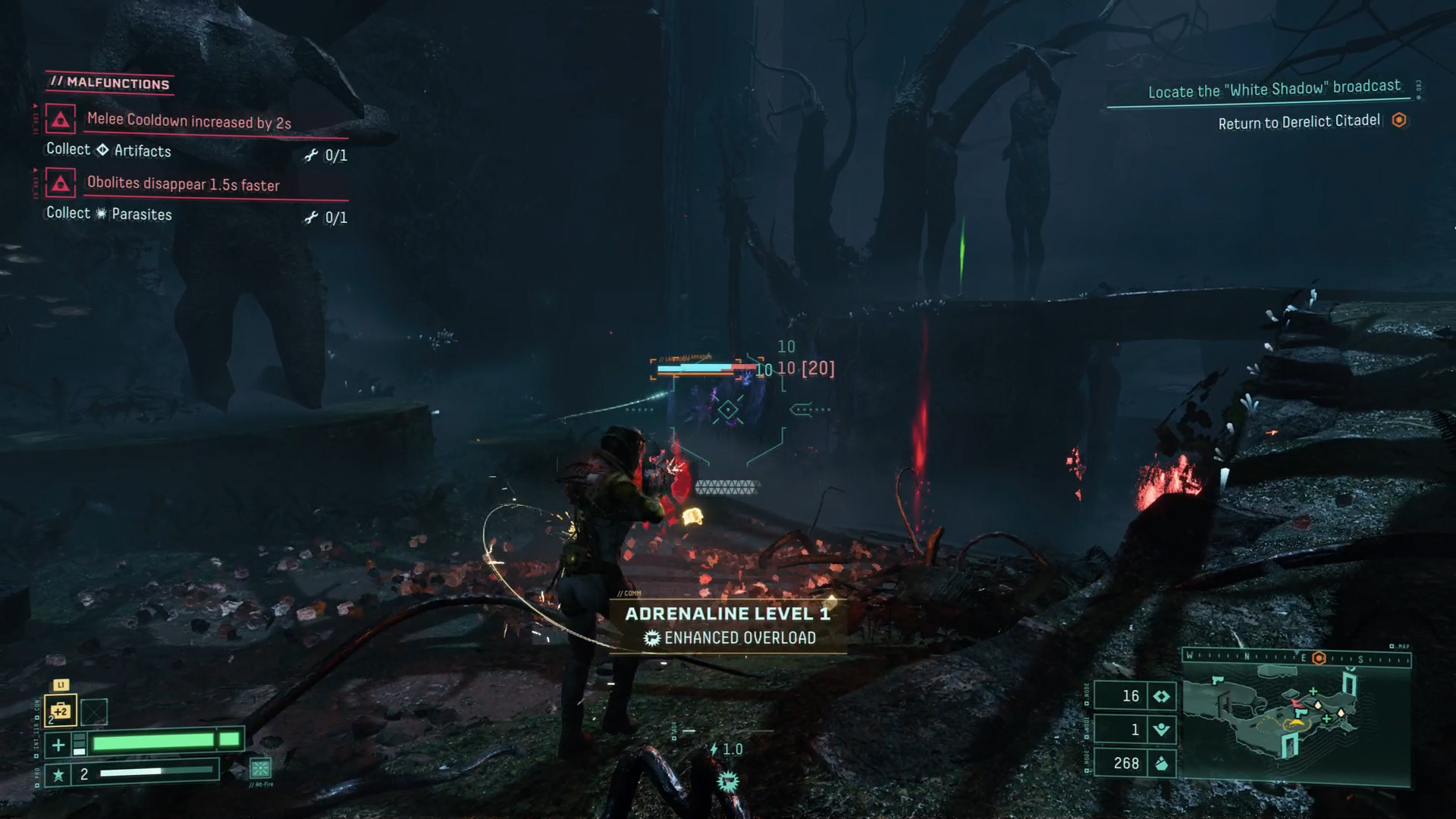
And even with the game’s short playtime, the latter three biomes are extensions of the earlier three. The desert and icy biome are structurally similar, as both feature some identical rooms with hardly any variation. The two forests are also similar; minor changes are made to the foliage, but that’s not enough to differentiate them. These biomes do feature some new rooms, but they also reuse many old ones.
The only motivation to retread an area is to unlock all the cyphers and datalogs. Essentially, the player’s investment in Returnal’s narrative has to be absurdly high in order for the game to grip them during reruns.
Disappointing third act
Returnal has an obscured third act that can only be accessed by retreading each biome to unearth a specific item, one with a low spawn rate (at least, it did when I played). Locking the final act by luck is a bizarre choice, especially since Returnal offers little replayability elsewhere; an area will always look and feel the same, and the bosses will always utilize the same tactics. After coming to the end of the game’s short runtime, players grind to reach the hidden third act rather than experience something novel from a more natural ending.

It took me 12 hours to beat Returnal. And after grinding for another 17 hours, I reached the “third act.” To make matters worse, this third act consists of nothing more than a couple of cutscenes. Housemarque decided that the player grinding for over a dozen hours didn’t deserve a new boss or biome; players can receive the same sense of accomplishment by finding the cinematic on YouTube.
Devastating bugs
Returnal is a mostly bugless experience, but the few hiccups I encountered were devastating. You can spend anywhere from two to three hours in a run, but a single crash or bug will end it all. This wouldn’t be an issue if Returnal had a clever autosave mechanic that saved your progress, but quitting the game (or crashing) means you lose all of it.

Throughout the Crimson Wastes, there are portals that toss the player into a ten-second cutscene that shows them ascending the area’s mountain. When taking one of these portals, my game froze. I could still select items, but the controls were unresponsive. I lost two hours of progress from this bug.
Bottom Line
Due to a lack of content and an underwhelming rogue-like foundation that makes each run feel identical, Returnal lacks replayability. You can commit to more runs, but you'll be fighting the same bosses, exploring the same environments, and battling the same enemies. Returnal offers few surprises after the player comes to the end of its short campaign.
However, it makes up for this with exciting combat and tight movement. You'll need to dodge, fire and strike at an exhilarating pace while exploring immersive environments on a hostile alien planet. And with a compelling narrative that is sure to ignite debates for months after launch, Returnal is still worth playing — but wait for it to go on sale.

Self-described art critic and unabashedly pretentious, Claire finds joy in impassioned ramblings about her closeness to video games. She has a bachelor’s degree in Journalism & Media Studies from Brooklyn College and five years of experience in entertainment journalism. Claire is a stalwart defender of the importance found in subjectivity and spends most days overwhelmed with excitement for the past, present and future of gaming. When she isn't writing or playing Dark Souls, she can be found eating chicken fettuccine alfredo and watching anime.
